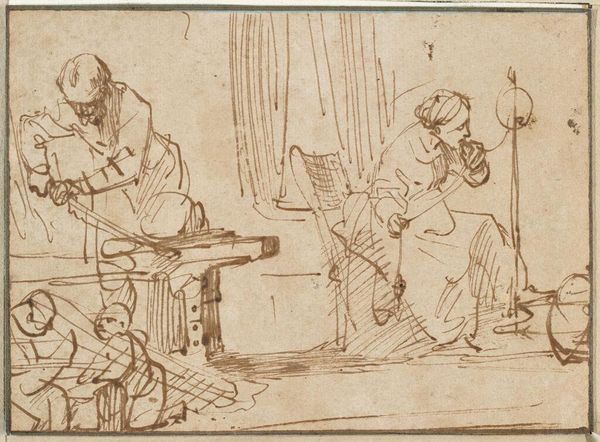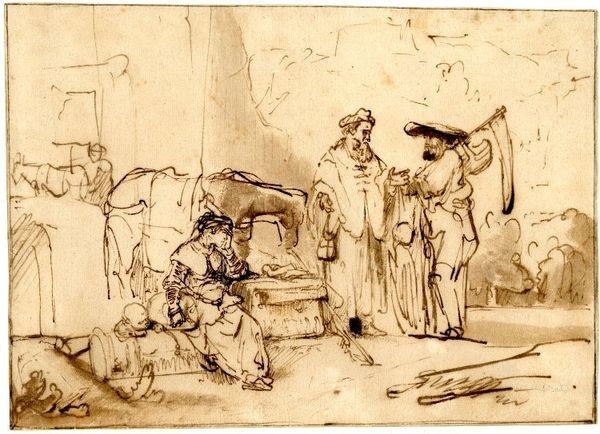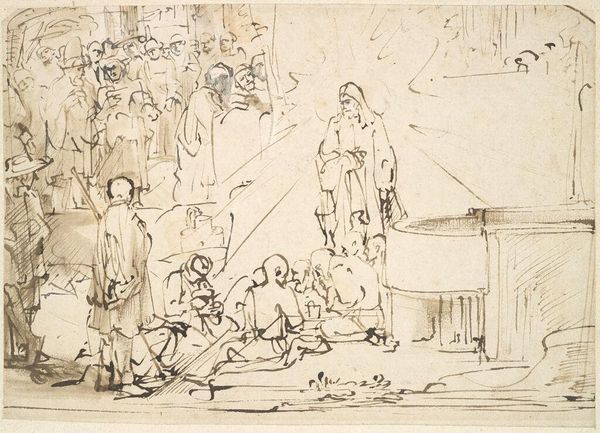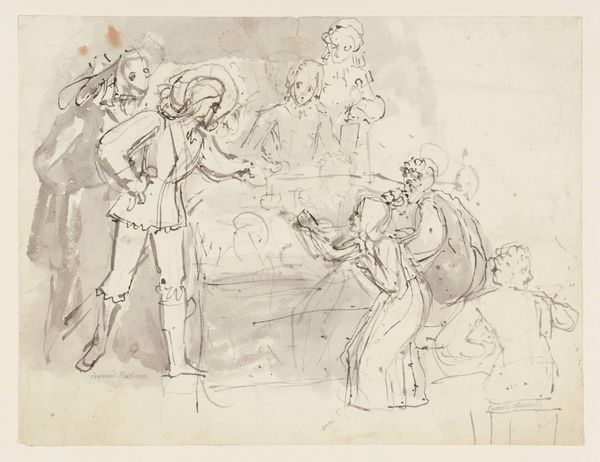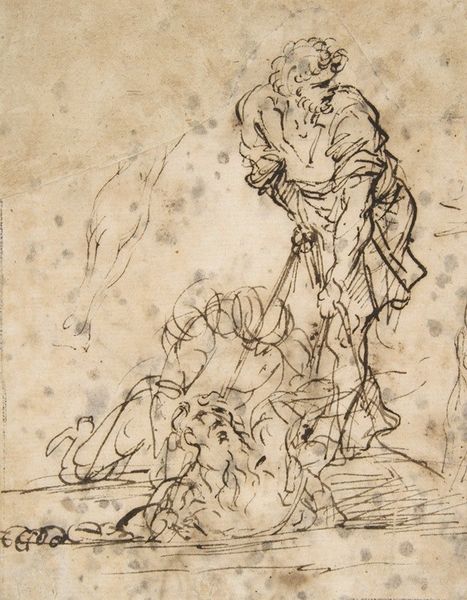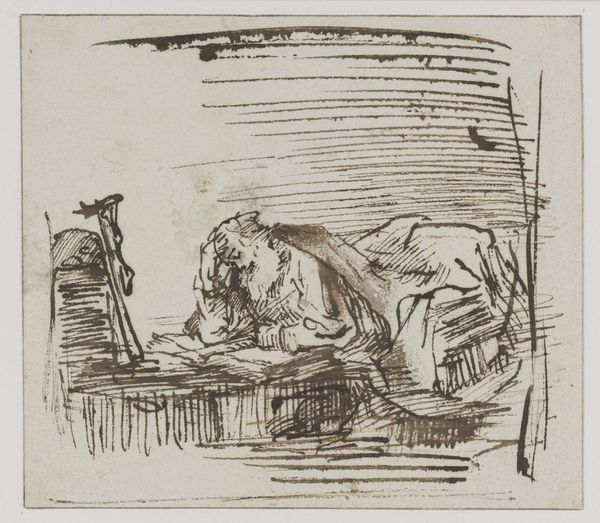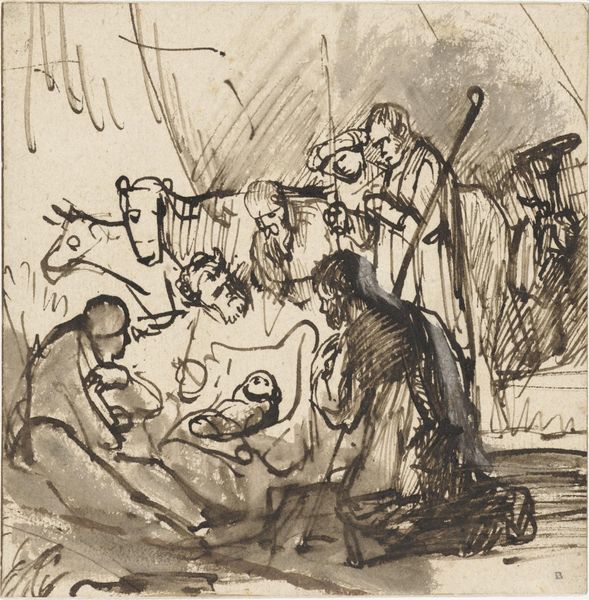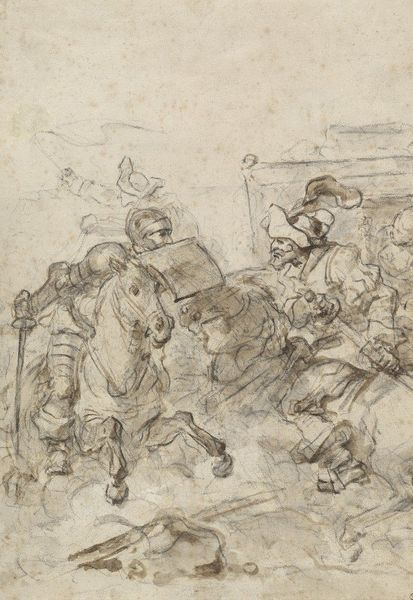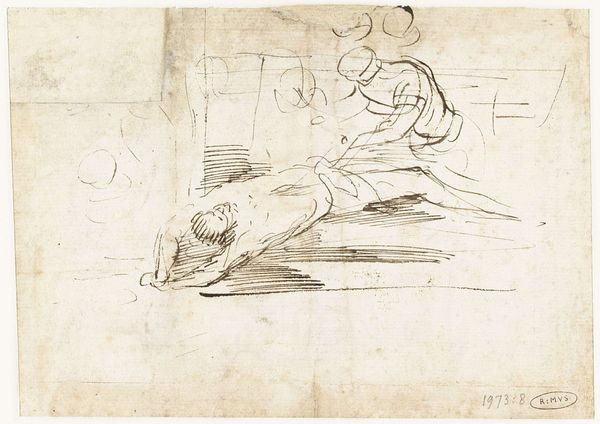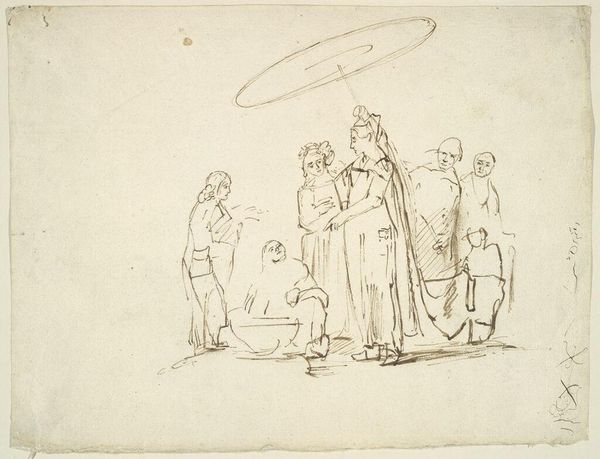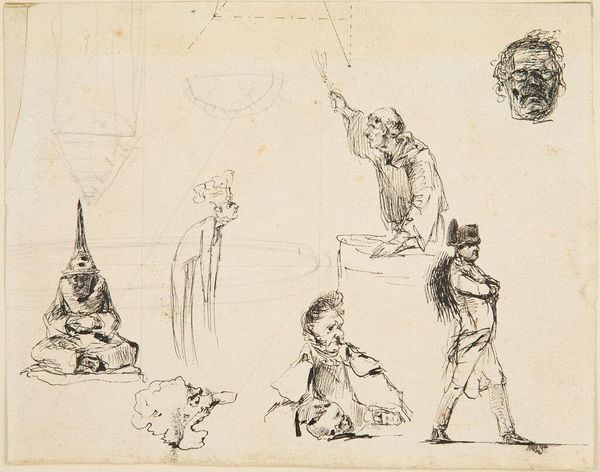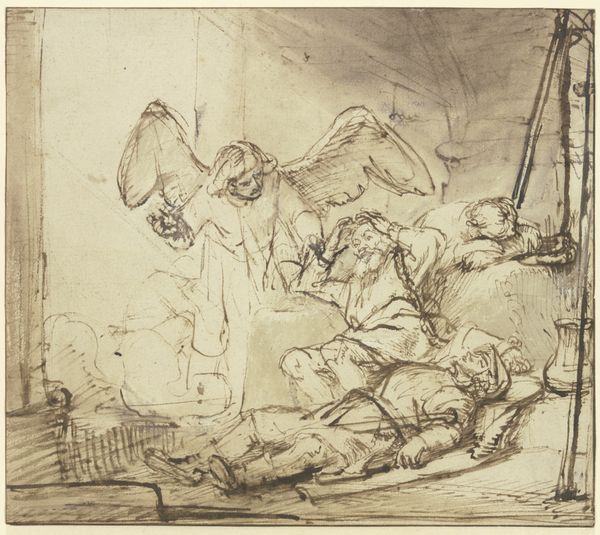
drawing, print, paper, ink
drawing
narrative-art
figuration
paper
ink
romanticism
history-painting
Dimensions: 6 7/8 × 8 11/16 in. (17.5 × 22 cm)
Copyright: Public Domain
Curator: Here we have François Gérard's drawing, "Othello Hesitating to Kill Desdemona," created sometime between 1790 and 1815, rendered in ink on paper. It's currently held in the collection of the Metropolitan Museum of Art. What’s your initial reaction to this, seeing it here in reproduction? Editor: The frenetic energy hits me first. It’s almost nightmarish. Those figures floating around, are they specters of Othello's mind or the dreams of Desdemona before her tragic demise? Curator: It's interesting you see specters. Given the period, we can consider how Gérard uses a historical narrative from Shakespeare’s Othello to engage with the Romantic era's exploration of emotion, of course, but also emerging colonialist dynamics, filtered through Shakespeare’s language. The subject of a Black general, betrayed and driven to murderous jealousy is quite complex. Editor: Absolutely, and the imagery reflects that turmoil. Look at Othello's pose. He's perched, almost frozen, caught between his duty, or what he perceives as such, and the weight of his impending action. The turban, while possibly meant to evoke exoticism, also makes him appear trapped, his thoughts perhaps muddled by outside forces. Curator: Exactly. The artistic choice to depict the hesitation is crucial. This moment embodies a pivotal intersection where personal tragedy and broader social anxieties converge, as a Moor's honour and Desdemona's purity are thrown together by racist power structures. Consider how his inner turmoil symbolizes the disruption of colonial order, however problematically framed. Editor: Yes, it's not simply about a personal failing; it is loaded with societal meaning. The image almost begs us to question who truly holds power in this tragedy, Othello, Iago, or Venice? I keep being drawn to those swirling lines though. What could Gérard be suggesting through their inclusion? Curator: The swirl could easily invoke that very sense of psychological drama so enmeshed with the time in which it was produced. However, those lines above Desdemona almost carry her essence out of her sleeping form - her soul or her identity leaving before the ultimate moment. Editor: So much to unpack within what initially seems like a historical narrative scene. The personal, political and the symbolic weave together so strongly. Curator: Indeed, viewing "Othello Hesitating..." provides not only insight into Romantic art but into ongoing dialogues concerning race, power, and representation within canonical works. Editor: It leaves you contemplating the enduring nature of such tragic flaws, both within the individual and within society itself.
Comments
No comments
Be the first to comment and join the conversation on the ultimate creative platform.
